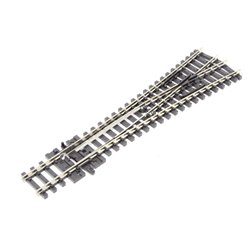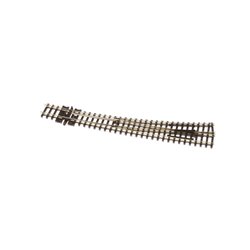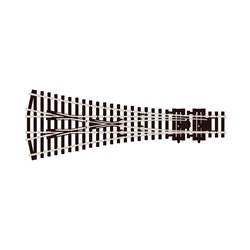When it comes to hobby knives, the expensive part of the knife is often the bits surrounding the blade and not the...
No products
Product successfully added to your shopping cart
There are 0 items in your cart. There is 1 item in your cart.
Search Tips
Christmas and New Year
We are dispatching orders every weekday apart from Christmas Day, Boxing Day and New Year's Day.
If you order is time critical, select next day delivery at checkout.
The shop in Sandown is closed from 25th December, reopening on 30th December.
Do I need to create a fiddle yard for my layout?
A fiddle yard is an optional component of a model railway layout. It is essentially a hidden storage area where trains can be parked when they are not in use, or waiting to be brought onto the layout. A fiddle yard can be a very useful aspect of layout operations but like so many aspects of layout design and construction its inclusion will be a matter of personal choice for the modeller, driven by the configuration of the layout.
Fiddle yards are highly useful features, especially on large or complex layouts. Having a fiddle yard allows a modeller to have a continuous flow of trains on their layout without overcrowding the visible tracks. It also provides a convenient way to switch between different trains or run multiple trains simultaneously.
The size and complexity of a fiddle yard will depend on the size of the layout and the number of trains that the modeller plans to operate. It can be as simple as a single track hidden behind a scenic backdrop or as elaborate as a multi-track storage yard with turnouts and sidings. That said, inclusion of a fiddle yard is still a matter of personal choice for the modeller. In the case of simple layouts, reduced space or for aesthetic choices, a modeller may opt to complete a layout without a fiddle yard.
In determining the need for a fiddle yard, the following factors should be considered :
- Available space : firstly, consider how large the Layout will be given the available space for storage and operation. Once these factors have been established, determine whether or not the overall layout operating requirements warrant the inclusion of a fiddle yard.
- Capacity : if a modeller determines that inclusion of a Fiddle Yard is warranted, establish how many trains will be operated on the layout including those stored in the fiddle yard. This will help determine the number of tracks and sidings that will be needed.
- Access : ensure that the fiddle yard is easily accessed for maintenance and retrieval of trains. Consider incorporating removable sections or access hatches in the layout design.
- Track configuration : plan the track layout in the fiddle yard to accommodate different train lengths and types. Use curved tracks or turnouts to allow for smooth movement between tracks.
Wiring and control : ensure that the layout has proper wiring and control mechanisms in place to operate the trains in the fiddle yard. Consider using block control or DCC systems to allow for independent operation of each train.
Overall, a fiddle yard is an extremely useful component of a model railway layout, providing storage areas and aiding operational flexibility. It allows a modeller to manage a variety of trains without cluttering the visible tracks. That said, a fiddle yard may not be needed for all layouts. Small or simple layout configurations may not warrant a fiddle yard. Likewise, a modeller may choose to dispense with a fiddle yard for aesthetic purposes. Like so many aspects of layout design, the need for a fiddle yard will inevitably be driven by the size and complexity of the layout and the preferences of the individual modeller.
Click here to receive the tips weekly in your mailbox. You can unsubscribe at any time.










